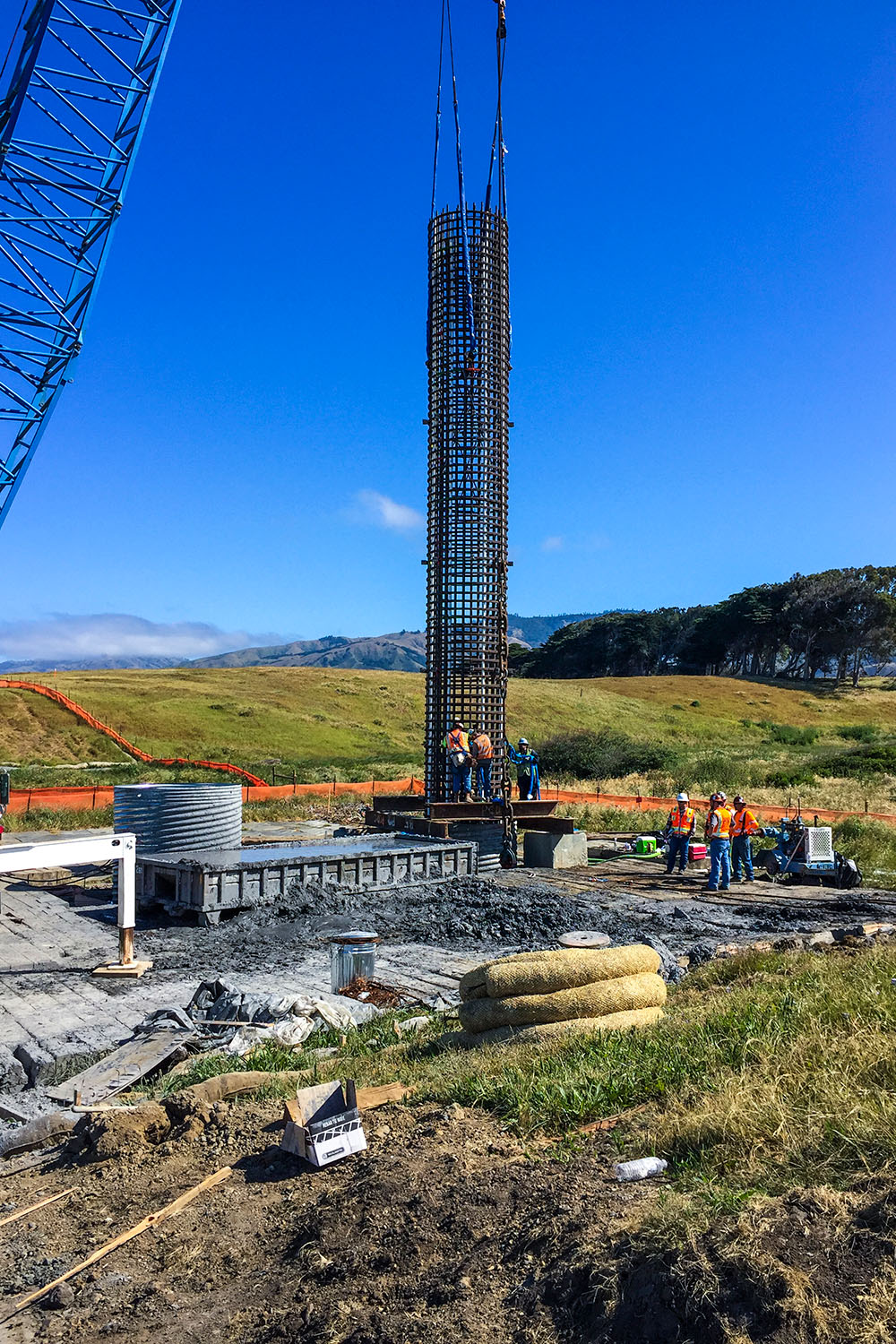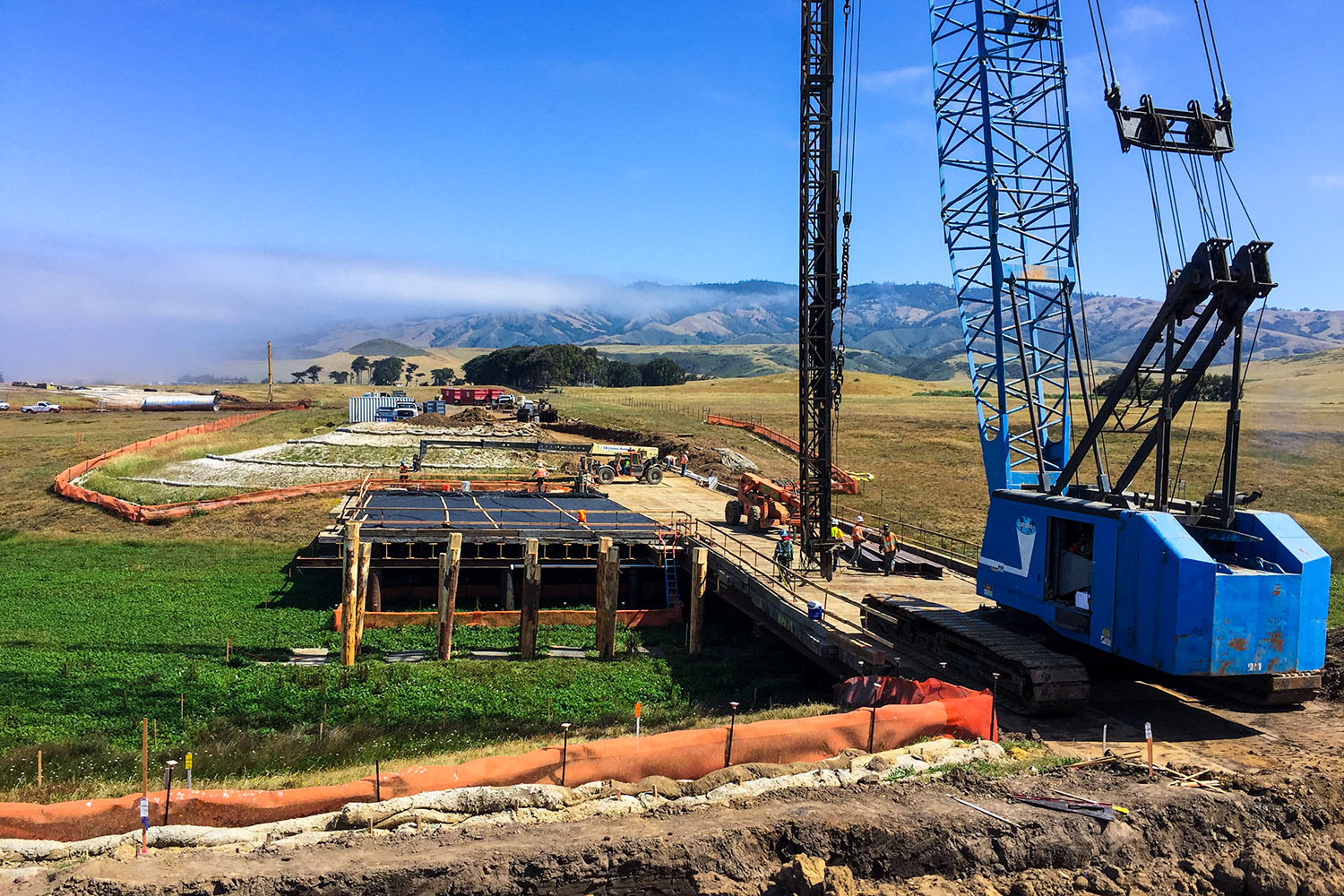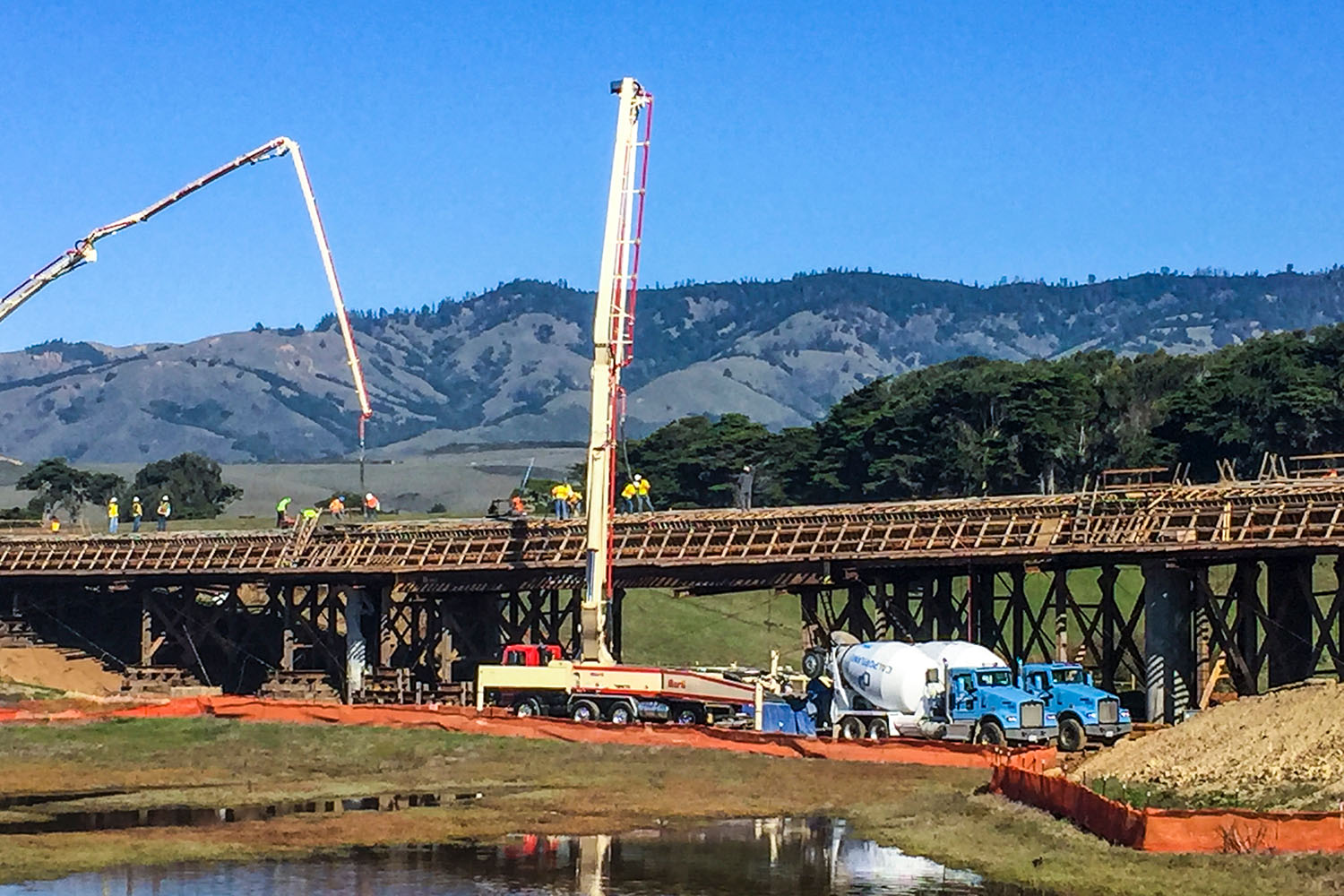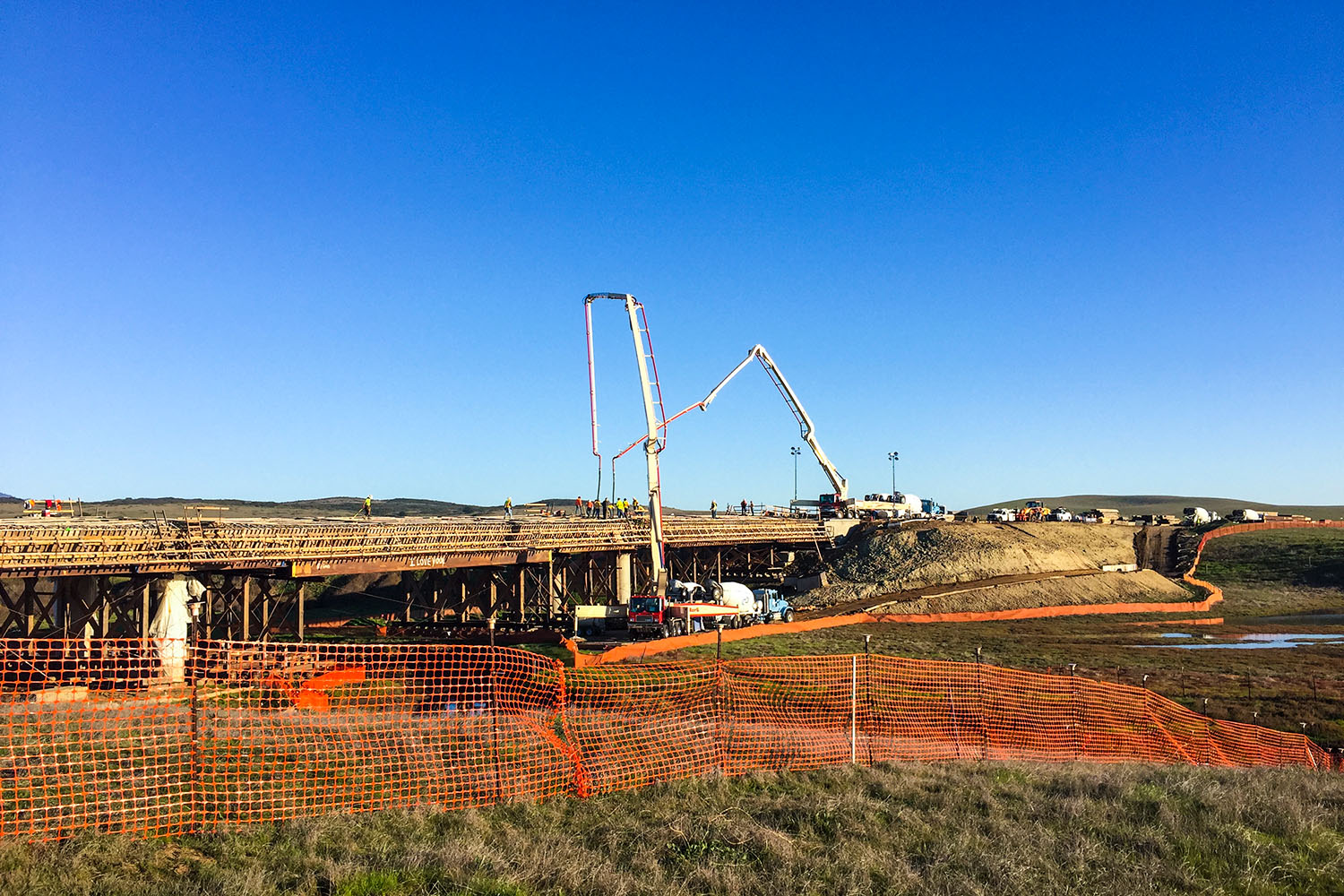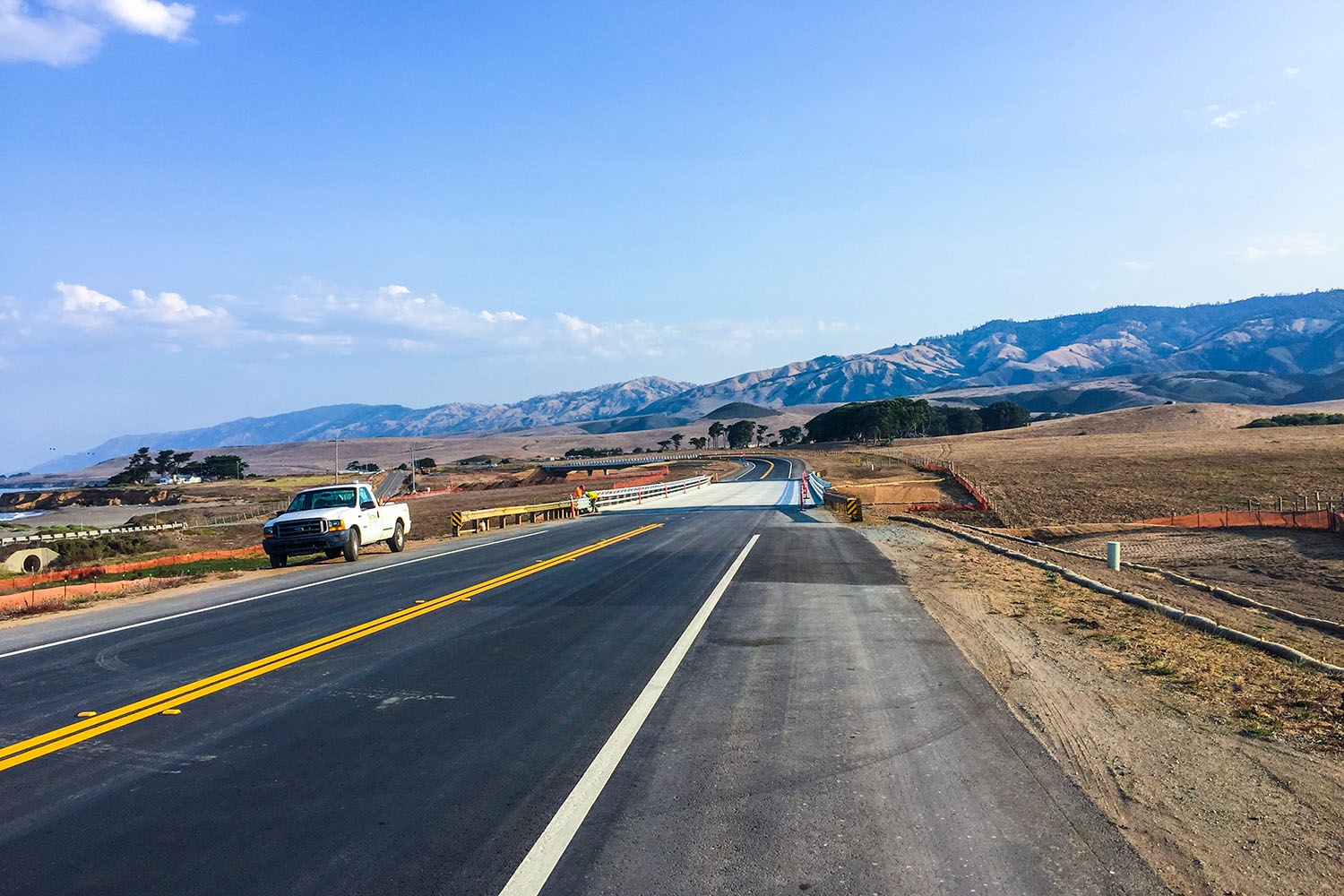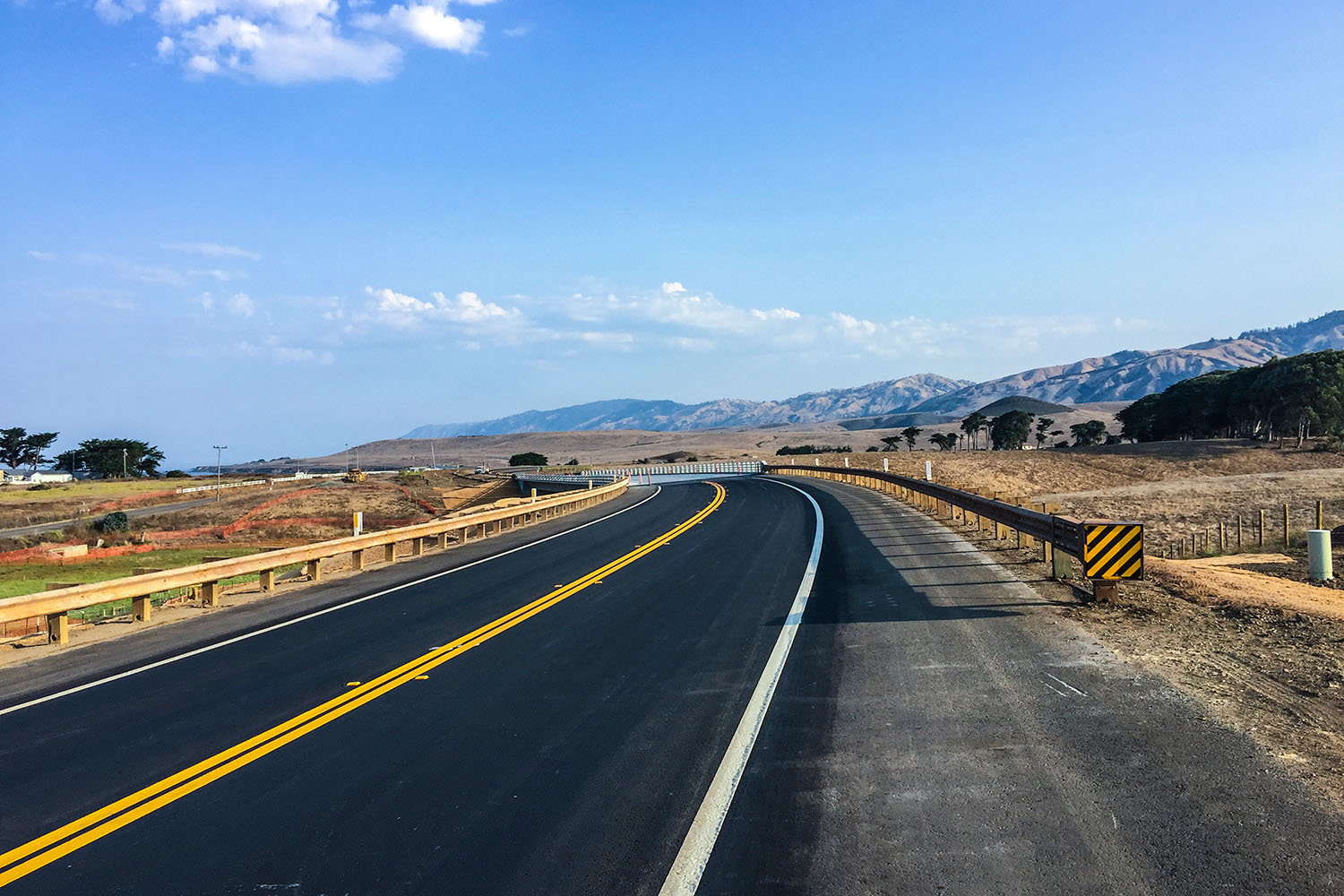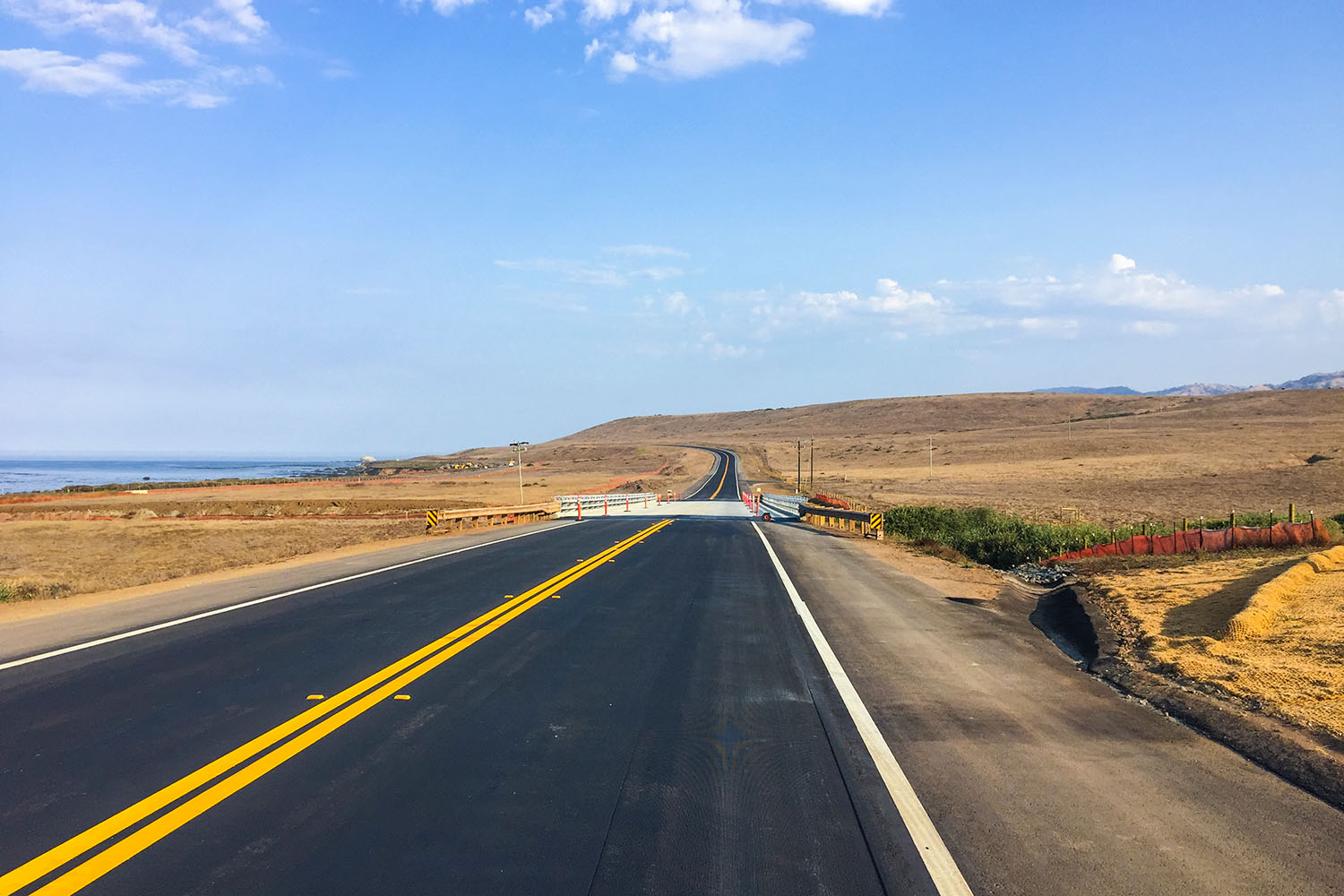Piedras Blancas Realignment at State Route 1
Details
Client
Caltrans
Project Name
Piedras Blancas Realignment at State Route 1
Services
Assistant Structures Representative
Construction Inspection
Awards
- California Transportation Foundation (CTF), State Highway Project of the Year Award
- Caltrans, Excellence in Transportation Award, Highway (Rural) Division
Overview
This $19.8M highway realignment project—starting approximately 0.3 miles north of the Piedras Blancas Lighthouse and ending just south of the Arroyo de la Cruz bridge—protects a 2.8-mile stretch of State Route 1 from continuing coastal bluff erosion. Realigning the highway inland (east) 80 to 475 feet from its original location required removing an existing roadbed and restoring stream banks, wetlands, and coastal prairie.
This project constructed three separate bridges. The first bridge replaced the downstream 90-inch concrete pipe culvert at Arroyo de Los Playanos with a two-span, 240-foot-long, post-tensioned box girder bridge. The structure required two 48-inch diameters, cast-in-place (CIP) concrete columns founded on two 72-inch cast-in-drilled-hole (CIDH) piles and a temporary trestle to minimize impact to the wetland and surrounding area.
The second bridge replaced a box culvert within an annual stream with a multi-span, 380-foot long, post-tensioned box girder bridge spanning the active channel at Arroyo del Corral. The structure required 66-inch diameter reinforced concrete columns placed over two 72-inch CIDH piles. A combination of pad falsework and temporary piling was used for the falsework and wetland mats.
The third bridge replaced a 108-foot concrete pipe culvert at Arroyo del Oso with a two-span, 261-foot-long, pre-stressed/pre-cast (PS/PC) girder bridge spanning the highly environmentally sensitive area. A temporary trestle was used to place the CIDH piles and columns.
Coordination with an onsite biologist ensured the protection of multiple environmentally sensitive species such as the burrowing owl, California red-legged frog, northern elephant seal, snowy plover, south-central California coast steelhead, and southwest pond turtle, tidewater goby, and two-striped garter snake.
Additionally, coordination with the County of San Luis Obispo, five state and four federal government agencies, as well as the Hearst Corporation, utility companies, and several interest groups contributed to the success of the project.
Mitigation included restoration of wetlands and coastal prairie, native planting, and screening of roadside development.

